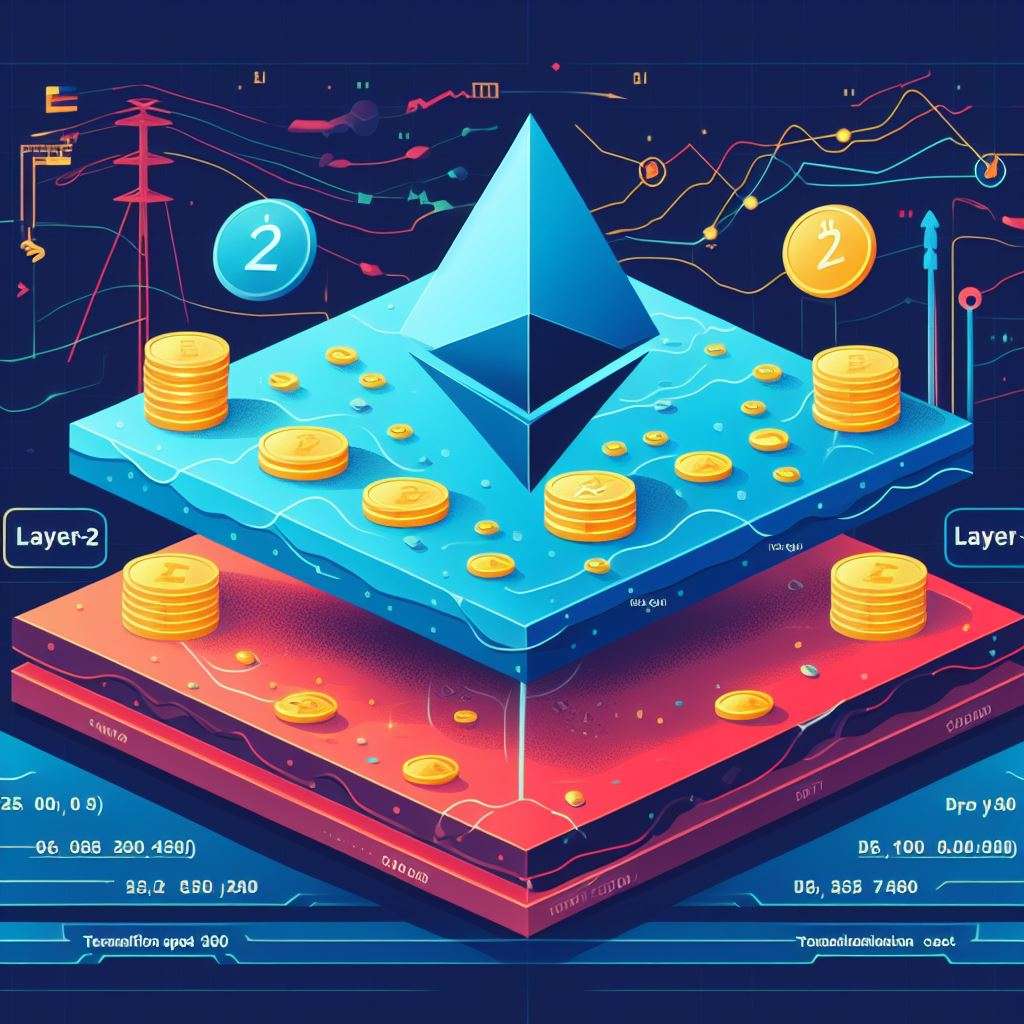
In the ever-evolving landscape of cryptocurrency, Ethereum’s Layer-2 networks have risen to prominence, commanding a remarkable 61% share of all transactions in the third quarter, according to the latest insights from Messari’s State of Ethereum report. This significant milestone underscores the growing importance and efficiency of Layer-2 solutions on the Ethereum blockchain, ushering in a new era of accessibility and sustainability for a broader user base.
Layer-2 networks, a technology conceived to address the scalability and performance limitations of the Ethereum network, have experienced a remarkable surge in usage and adoption. In this article, we will delve into the details of these developments and what they mean for both seasoned crypto enthusiasts and newcomers venturing into the realm of digital assets.
The Rise of Layer-2 Networks
Ethereum, the second-largest cryptocurrency by market capitalization, has long been celebrated for its smart contract capabilities and decentralized applications (DApps). However, as Ethereum’s popularity grew, it faced challenges related to scalability and congestion. Transactions on the Ethereum network often incurred high fees and slower confirmation times, which hindered its usability.
To overcome these limitations, Layer-2 solutions were introduced. These Layer-2 networks operate on top of the Ethereum blockchain and are designed to handle a significant portion of transactions off-chain, providing a more efficient and cost-effective way to process crypto transactions.
Messari’s State of Ethereum Report
The recent Messari report paints a compelling picture of the ascent of Layer-2 networks within the Ethereum ecosystem. In the third quarter, these Layer-2 solutions accounted for an impressive 61% of all transactions on the Ethereum blockchain. This statistic not only showcases the rapid adoption of Layer-2 but also demonstrates their effectiveness in alleviating congestion and lowering transaction costs.
What Does This Mean for Crypto Enthusiasts?
For seasoned cryptocurrency enthusiasts, the dominance of Layer-2 networks on Ethereum brings a multitude of benefits. First and foremost, it means faster and more cost-effective transactions. Layer-2 solutions are specifically designed to process transactions swiftly, providing a seamless experience for users who were previously discouraged by high gas fees and sluggish confirmation times.
Moreover, the increased usage of Layer-2 networks enhances the overall scalability of the Ethereum ecosystem. This scalability paves the way for more sophisticated DApps and decentralized finance (DeFi) platforms, as developers can build with confidence, knowing that congestion issues are significantly reduced.
Additionally, Layer-2 adoption bolsters Ethereum’s position as a leader in the cryptocurrency space. With its robust smart contract capabilities and now improved scalability, Ethereum remains a top choice for developers and investors seeking a platform for their projects and investments.
Opening the Doors to Newcomers
While seasoned crypto enthusiasts benefit from the rise of Layer-2 networks, newcomers to the world of digital assets are also in for a treat. The improved efficiency and lower transaction costs make entering the crypto space less daunting.
Previously, high gas fees deterred individuals from experimenting with small transactions or participating in DeFi activities. With Layer-2 networks, these barriers are lowered, making crypto more accessible to a wider audience. This accessibility encourages more people to explore the potential of blockchain technology and cryptocurrencies.
Sustainability and Environmental Considerations
Beyond accessibility and efficiency, Layer-2 networks also contribute to a more sustainable cryptocurrency ecosystem. The environmental impact of cryptocurrency mining has been a topic of concern in recent years, particularly with the energy-intensive proof-of-work (PoW) consensus mechanism used by Bitcoin and Ethereum.
Layer-2 solutions can help alleviate some of these concerns by reducing the load on the Ethereum network. With fewer on-chain transactions, the energy consumption associated with mining decreases, making Ethereum a more environmentally friendly choice compared to some other cryptocurrencies.
The Future of Layer-2 Networks
As Layer-2 networks continue to gain traction, the future of Ethereum looks promising. Developers are actively working on various Layer-2 solutions, each with its unique approach to scalability and optimization. These ongoing innovations will further solidify Ethereum’s position as a blockchain platform of choice for a wide range of applications.
In conclusion, the dominance of Layer-2 networks in Ethereum’s transaction landscape signifies a pivotal moment in the world of cryptocurrency. This technology not only addresses scalability and cost issues but also promotes sustainability and accessibility. Whether you’re a seasoned crypto enthusiast or a newcomer, the rise of Layer-2 networks on Ethereum is a development worth watching closely, as it reshapes the cryptocurrency landscape and sets the stage for a more inclusive and sustainable future in digital finance.




Get the latest Crypto & Blockchain News in your inbox.